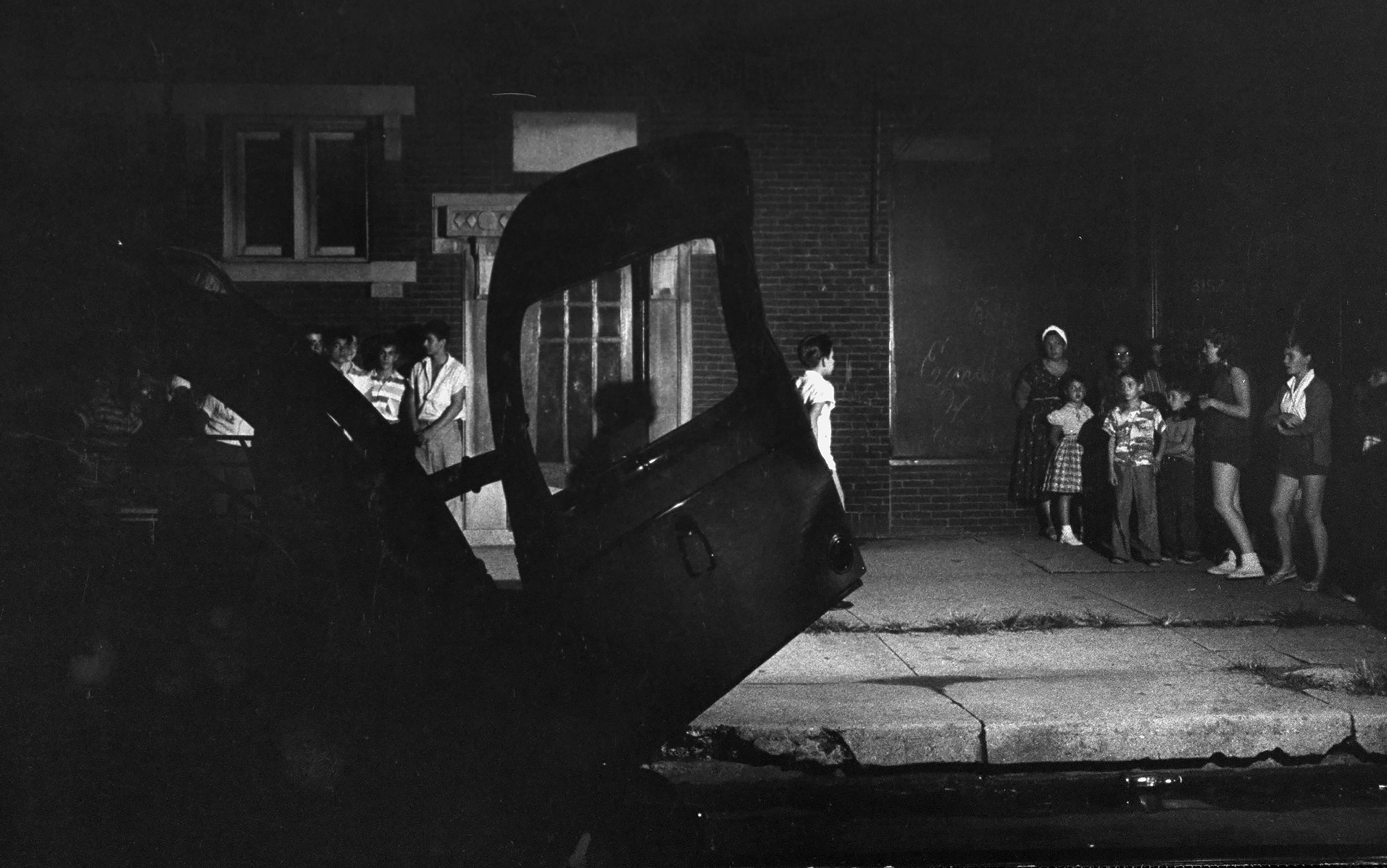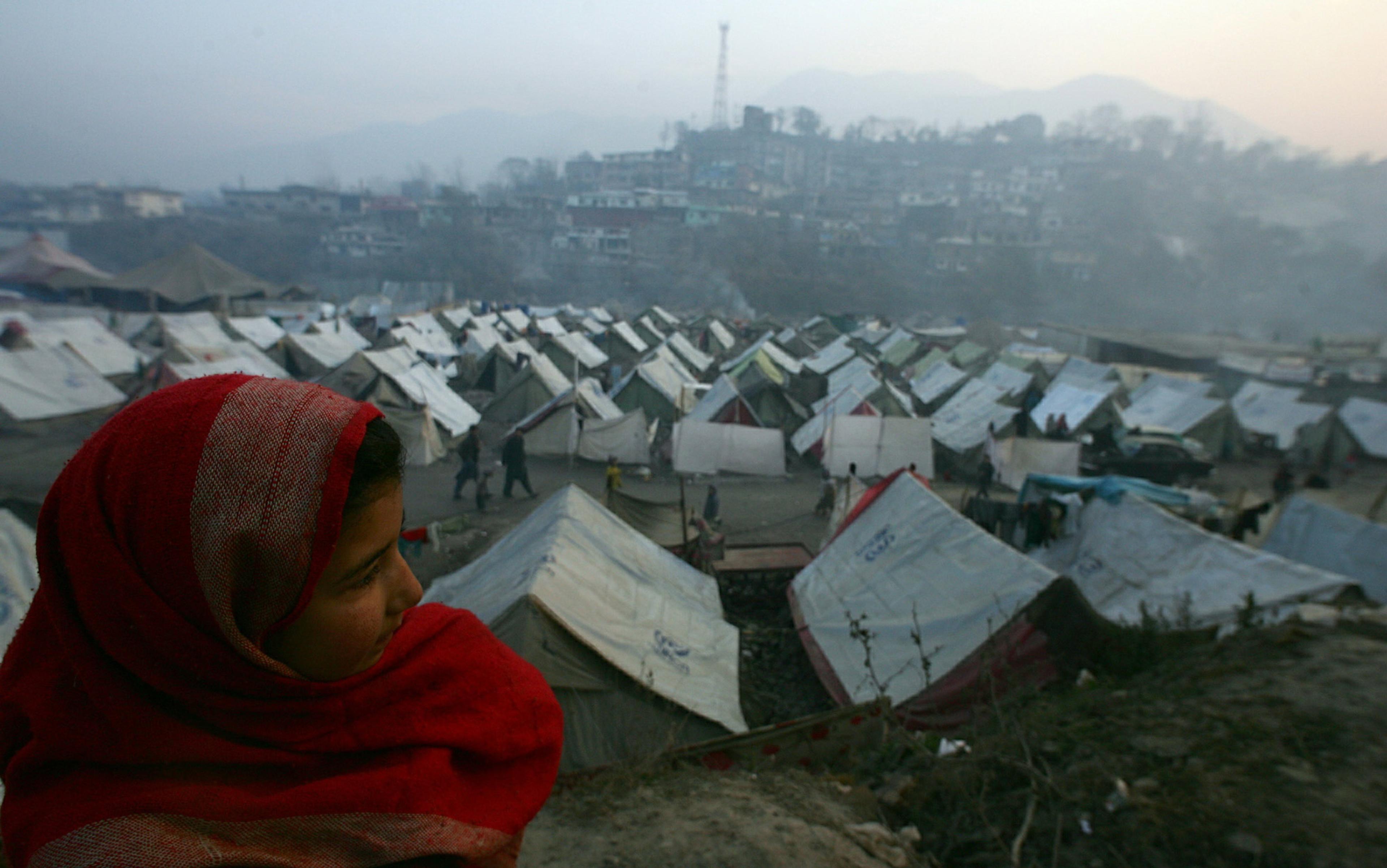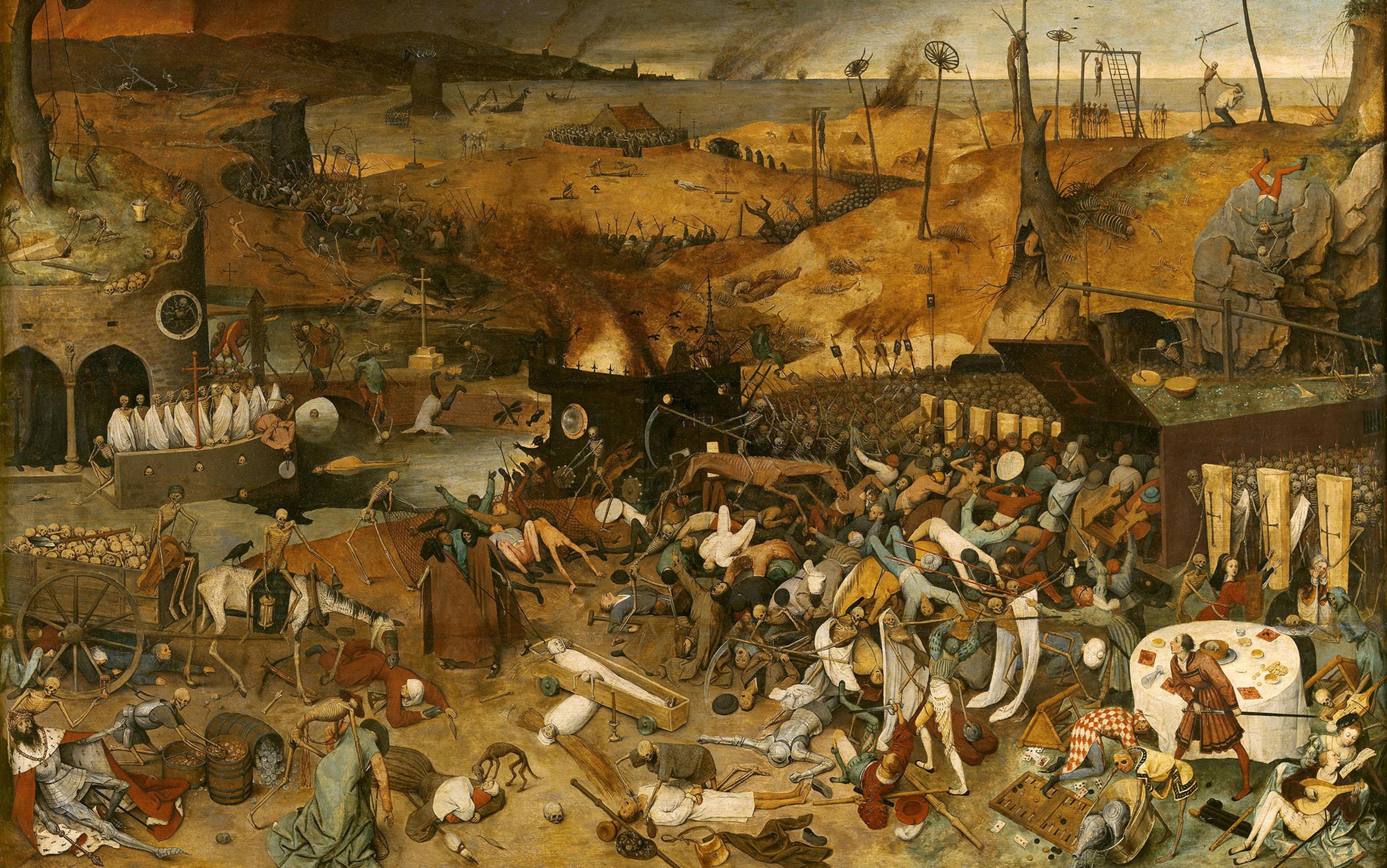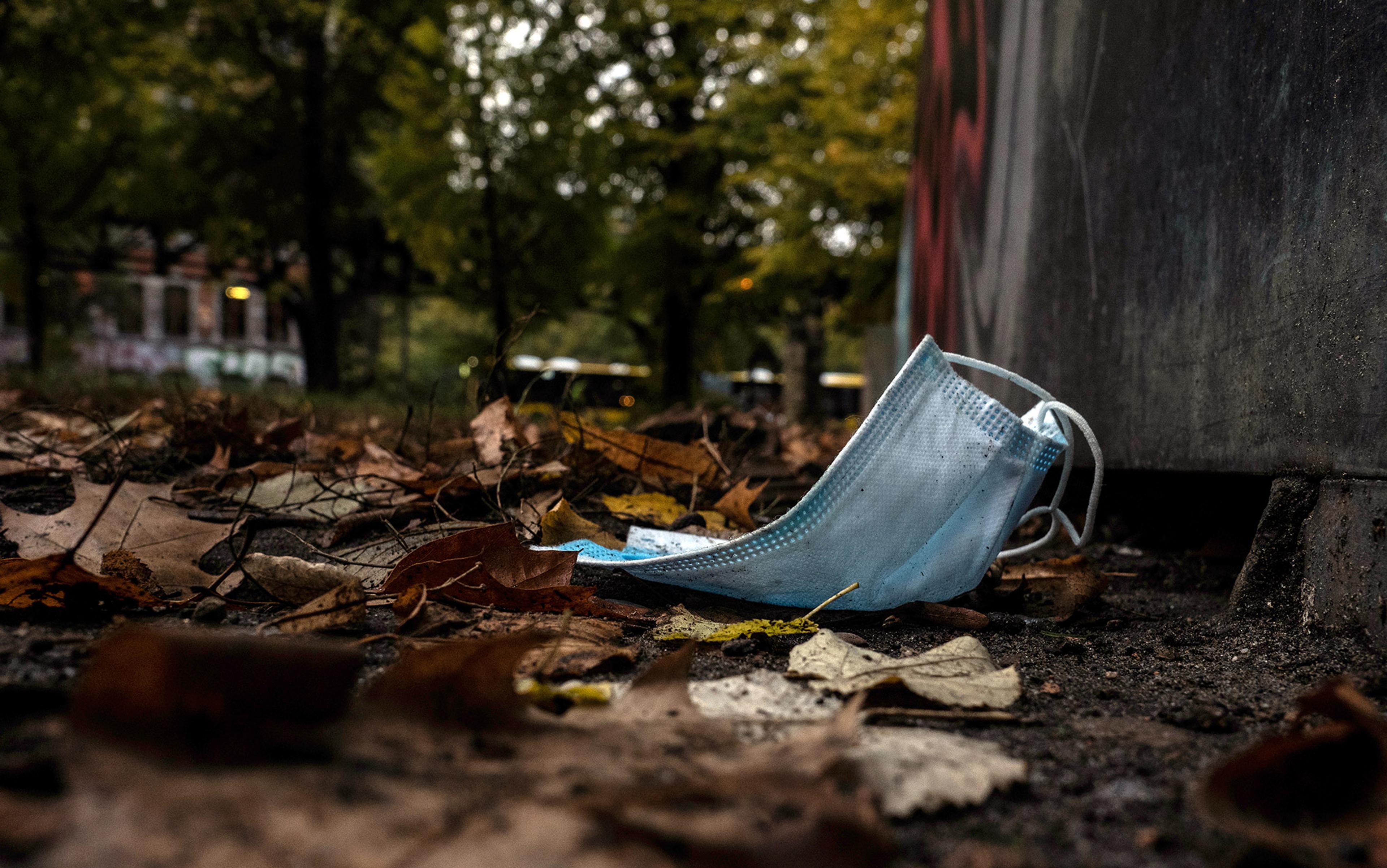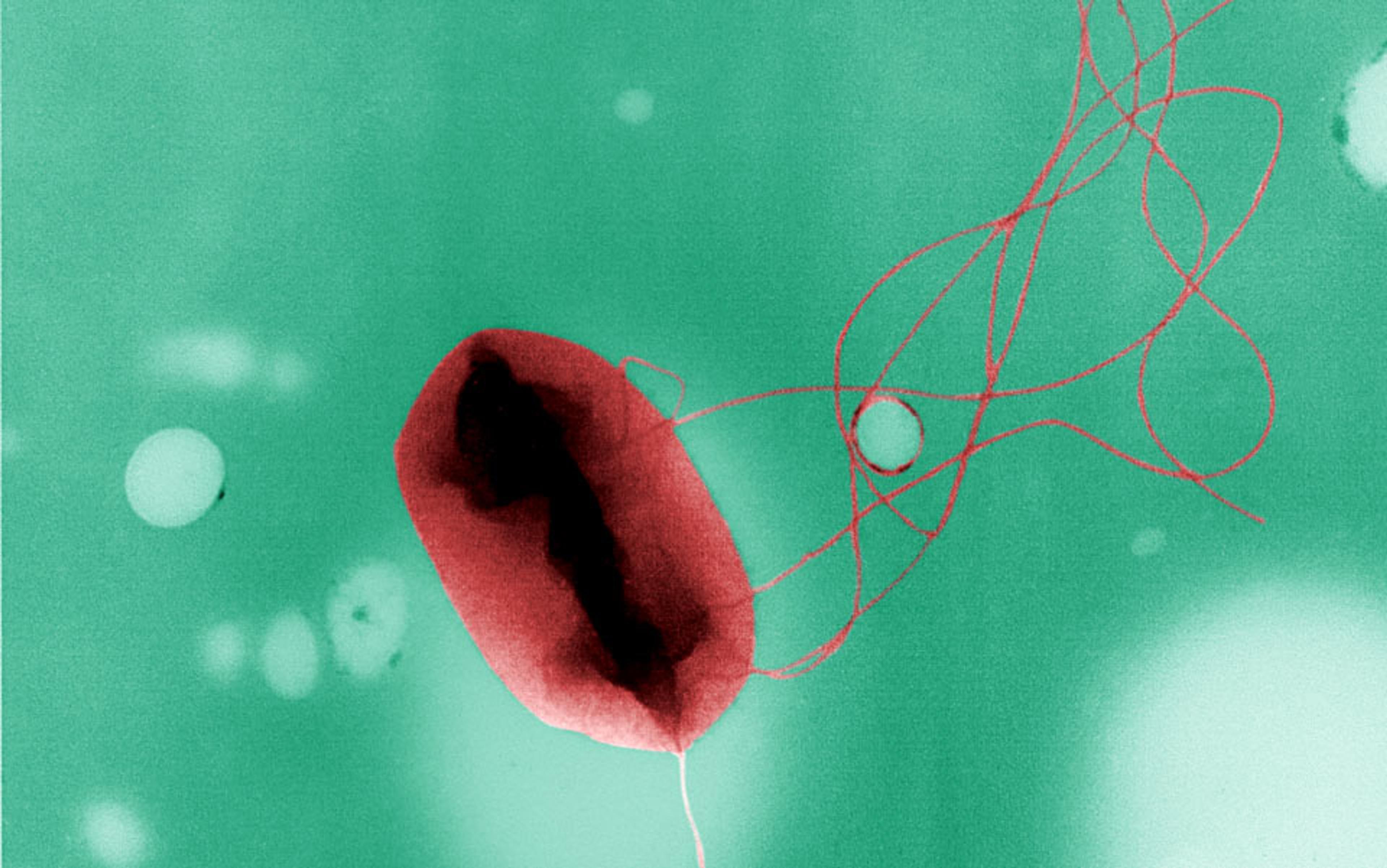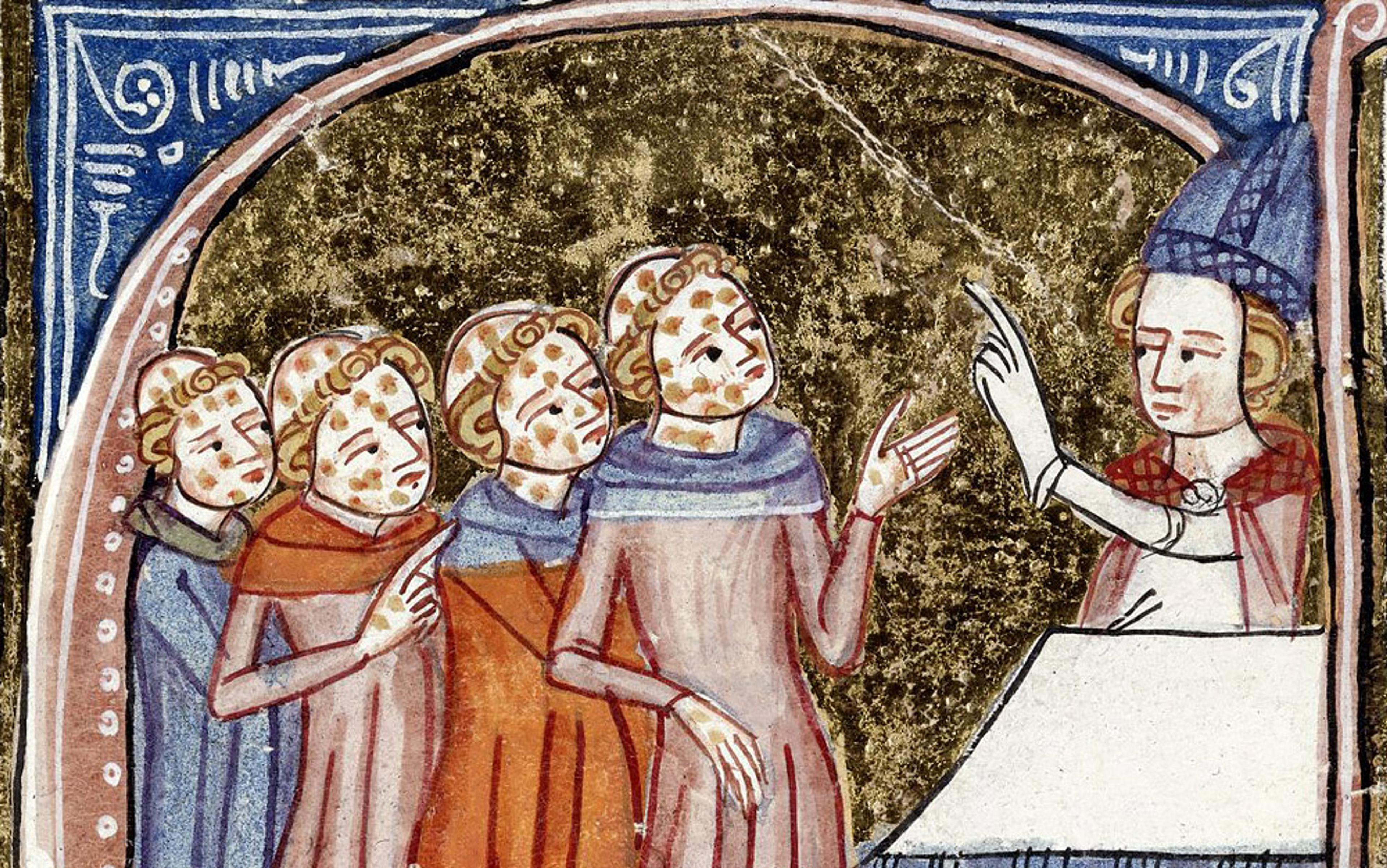By his own admission, Mickey Steinberg was a tough kid, often getting into scrapes. When he arrived at camp in the hills of Maryland in the summer of 1944, aged 11, he came with a broken arm in a cast and sling. His parents sent him out of the city of Augusta, Georgia, every summer, to keep him away from the yearly outbreaks of poliovirus – the summer plague. That season, an intestinal infection raged through the camp, and Mickey felt sick enough to be taken to the infirmary. That sort of thing, Mickey says, happened often, and no one was too disturbed by it.
Around dinner time one night, the camp nurse came in and said to him: ‘You haven’t taken your pills!’
‘I can’t swallow,’ Mickey said, and when he tried again, water came pouring out of his nose. The nurse turned without a word, locked the door, and left him alone for several hours until men came with a stretcher to take him, ultimately, to Sydenham Hospital, a large facility in Baltimore dedicated to the care of infectious disease and overrun with poliovirus patients. There were children, and some older people, lining the hallways and sleeping on cots in offices. The whole place stank of boiled wool, pieces of which were wrapped around arms and legs covered in rubber sheeting to keep each compress in place. These hot blankets helped to keep limbs mobile – it was part of the protocol of the progressive Australian nurse Sister Elizabeth Kenny, whom Mickey credits with saving his life.
Another, older boy from the same camp was not so lucky. The two children lay talking in the iron lung room, though they hadn’t been put in the units yet. The other boy asked for a nurse. She came in and spoke for a while to the child. Then he stopped answering.
Two children out of a camp of several hundred, many of whom had an intestinal infection. One lived to battle partial paralysis for years, recovering enough to make it to the wrestling team at Georgia Tech, and later to join the 82nd Airborne Division as a paratrooper. The other child died.
It is worth remembering the broken arm.
Polio – like several other diseases including COVID-19 (caused by the virus SARS-CoV-2) – is an infection that spreads by stealth. For every case of paralytic or fatal polio, there are 100-200 cases without any symptoms or presenting as just a mild intestinal infection. That the disease often leaves no discernible footprint adds to its terror. Parents never knew where their children would be safe, nor which one it would strike.
Germs have a variety of strategies for reproducing and transmitting to new hosts – strategies shaped by the action of natural selection, which ensures that each lifeform is adapted to its ecosystem, and that the fittest survive. Some germs, such as smallpox, spread through contact, but they also have another, more powerful way of persisting: they’re durable in the external environment. Smallpox virus particles (virions) can remain infectious for years if they’re buried in a scab. That’s one way the virus can keep infecting and spreading: it waits for a new host to happen by. Spreading through water or by insect vectors are strategies, too.
But spread by stealth is another strategy and, perhaps, the most terrifying of all. We have been told, for years, to fear pandemics: SARS and MERS (both caused by coronaviruses), Zika, Ebola, the highly pathogenic H5N1 bird flu. But perhaps we’ve been fearing the wrong thing. It’s not just new diseases we have to fear. It’s those that spread by stealth.
His broken arm might have been the gateway poliovirus needed to reach his brain
Variola virus, which caused smallpox, one of the deadliest viruses known, had one signal vulnerability: you could see it. Smallpox left its marks on everyone. Some cases were milder than others, but the pox had a tell. It let you know – with a germ’s equivalent of a roar – where it had been, and that made it easier to eradicate than polio. You knew who was stricken, you learned whom they’d been in contact with, and you vaccinated those people. This technique – ring vaccination – drove smallpox off the Earth. Yet, despite years of relentless work, the World Health Organization has still been unable to eradicate polio.
Often, the poliovirus infects merely intestines, but it has another, deadlier capacity: the tendency to aim itself at the nervous system in general and at the anterior horn motor neurons of the spinal column in particular. To cause paralytic disease, poliovirus has to break through the intestinal walls, make its way to the bloodstream, and then enter the nervous system, likely through injury to the muscles.
That’s how Mickey’s broken arm might have provided poliovirus the gateway it needed to reach his brain. Until recent years, children and young adults had to get sick, even die, before doctors knew that poliovirus was present at all. Following cases of obvious paralytic polio has been the traditional way of detecting polioviruses as they move through the world. Recently, some researchers found other ways to track the disease by monitoring faecal and other matter in sewage. Poliovirus was found circulating through Japanese sewers from 2010 to 2013. And in Israel, analysis of sewage water detected an outbreak, albeit one causing no paralytic disease, in 2013 and 2014. By following polio through the sewers, doctors knew where to focus vaccine efforts, even without anyone falling ill from the virus itself.
Pathogens that spread by stealth have stalked us through human history. In 1910, during the first great Manchurian epidemic of pneumonic plague that killed 60,000 people, the British physician Reginald Farrar visited a hospital near Mukden, one of the centres of the outbreak, in northeast China. Afterwards, he and a colleague stopped at a shabby inn hosting ‘coolies’ – Farrar’s rather derogatory term, used by British explorers and Colonialists for Asian labourers, in this case men from Shandong province. Instead of beds, such inns had k’angs, raised platforms of stone that could be heated from underneath by small fires. Farrar saw six workmen seated quietly on a k’ang together. They didn’t look especially ill, but one of the men coughed, and Farrar asked each man to spit into a cloth. They all spat blood. The next day every one of them was dead.
On the surface, explosive, fulminant pneumonic plague, the deadliest bacterial disease known, doesn’t seem very stealthy. It sickens and kills people in two to five days. Untreated, nearly all patients die. Even on antibiotics, 14 per cent will still succumb to a virulent bacterial onslaught that, at time of death, can replace certain organs with billions of germs in an almost pure culture. So the stealthy aspect of plague has nothing to do with a silent footprint. Instead, it moves with another kind of stealth, seen most clearly in the 14th century.
The Black Death of 1346-53 was the greatest pandemic in human history: it burned through the entire known world and killed an estimated 25 million people in Europe alone. From samples of bacterial DNA taken from the tooth pulp of corpses in Black Death cemeteries, we know that the deadly pandemic was caused by the plague germ Yersinia pestis – the same germ that killed the labourers on their k’ang in Manchuria, or that today still kills prairie dogs, ground squirrels, and a few people each year in the western United States and around 1,600 people worldwide, mainly in Africa.
But the Black Death behaved very differently from most plague outbreaks today. Plague is a rodent disease, carried, in much of the world, by rats and rat fleas. It’s lethal, with a death rate for untreated plague of 60-100 per cent, depending on whether it’s flea-borne or lung-borne (pneumonic) plague. But it’s sluggish. For decades, many scholars, historians and biologists alike refused to believe that the slow-moving rat- and rat-flea-borne disease could have caused the explosive Black Death, which swept across the known world like a firestorm. According to two of these plague sceptics, the Black Death moved through England at the rate of 2.5 miles a day. No rat-borne disease could possibly have spread that fast – especially since rats are homely creatures and don’t travel.
But researchers retrieving bacterial DNA from Black Death victims proved plague did indeed cause the Black Death, leaving scientists with something of a mystery: how did it move so quickly?
The toll in lives, ruined families and uprooted social order is staggering
Through stealth. The plague germ Y pestis is, like poliovirus, a stealth-spreading pathogen that has a diabolical way of keeping itself moving. What Farrar saw in Manchuria – people close to death who show hardly any symptoms of illness – also characterised the Black Death. The 14th-century Italian poet and humanist Giovanni Boccaccio described how men would eat lunch with their friends and dinner with their ancestors in paradise. Plague infects silently and then kills quickly. It keeps its victims up and moving even as the germs take over their bodies. When plague came to a city or village, its inhabitants would try to repulse newcomers, as the citizens of Catania in Sicily did when people came from Messina begging for refuge. But it was too late – plague had stolen into the city and, in turn, its people fled, spreading the plague again.
Primary pneumonic plague is highly transmissible as well as deadly. In the modern world, it’s also quite rare. Only in Central Asia do we see plague outbreaks of a similar speed and intensity – and thanks to modern science they are quickly aborted. There is something about Central Asian plague that makes it quite distinct from other forms: it is spread by large marmots called tarabagans, the only organisms other than people that seem to catch and spread plague through the respiratory route. Manchurian plague was marmot plague. So, almost certainly, was the Black Death, which indeed originated in marmot country, the steppes of Central Asia.
Making matters worse, Black Death transmission had another, subtler aspect: it was spread by human fleas. Pulex irritans was so common an associate of our medieval ancestors that perhaps they were hardly noticed. The human flea hides in unwashed clothes and bed linens, and it jumps with ease from host to host. Like lung-borne plague, human flea-borne plague is transmitted by stealthy means.
Crucially, plague’s secret isn’t in the mode of transmission, but in the strategy of the germ itself. To aid its invasion of the human body, plague prevents inflammation. It achieves this feat through the action of a toxin, which, when released in the human body, stops innate immunity – our initial defence mechanism against invading pathogens, which manifests as inflammation. With the inflammatory response stopped dead in its tracks, so too is the early fever, chills and muscle aches that accompany early infection. Without all the familiar features of influenza and other common microbial ills, a person infected with plague would never know anything was wrong until he or she was near death, making it all the more likely for that individual to spread it to someone else.
The deadly impact of this strategy was felt when the Black Death first blazed out of Central Asia. Since no one had any antibodies to the bacterium, almost everyone exposed likely came down with the infection. In country after country, town after town, village after village, the story was the same: people who had no symptoms suddenly dead in their thousands, in their millions, with no end in sight. Over its long years in Europe, the toll in lives, ruined families and uprooted social order is staggering.
Though the Black Death, with its explosive lung-borne transmission, ultimately ended, plague did not. At some point, it entered the rat population and continued to cycle throughout Europe, spreading through the Oriental rat flea (Xenopsylla cheopis) and human fleas. The last major outbreak in Europe came in 1720, in the port of Marseilles in France. Plague then disappeared from Europe (though not till the end of the 19th century from Russia or the Levant), probably because the invention of cheap soap allowed people to wash themselves and their clothes, and thus set themselves free.
When SARS-CoV, another coronavirus, arose in southern China in 2002 and began to move around the world, it killed almost one in 10. But it struck only some 8,000 people, killing fewer than 800. This virus was upfront about its depredations. There was nothing stealthy about it. It liked hospital environments where intubations and respirators created aerosol clouds that enabled it to spread. But its very visible presence made it relatively easy to drive out of existence through the oldest, simplest methods – quarantine and isolation. In a few months, but for three accidental laboratory releases, it was gone.
Despite its genetic similarity to SARS-CoV, the virus that causes COVID-19 is a different beast. Though most respiratory pathogens rely on coughing and sneezing as distribution systems, those carrying SARS-CoV-2 can carry the highest viral load in respiratory passages before symptoms begin.
With COVID-19, you don’t have to cough, sneeze or wipe your nose and then touch a surface or someone’s hand to spread the virus. You merely have to talk, sing or whisper at close range, and the virus has jumped from you to someone else. And only some of those people will actually fall ill. But in around two to five days (though sometimes even two weeks later) the viral load will mount in their respiratory passages and they will spread the infection further. Priests giving communion, singers in choirs, South Koreans kneeling in prayer and people on a pleasure cruise have all spread the infection.
Airborne particles smaller than five microns can linger for hours and travel further than six feet
And some of those people, particularly old people, but young ones too, will be sickened with lungs opaque as ground glass, with failing kidneys, or coagulation of the blood that throws out embolisms. And far too many will die. COVID-19 has swept round the world in a manner that puts even the Black Death to shame. Never in a world so interconnected and fuelled by high-speed travel has there been anything to equal how this virus locked down the entire planet.
And the most terrible aspect of that newly evolved pathogen is that it spreads by stealth.
Kristen Kelli Coleman, an early career bio-aerosol scientist now based in Singapore, has been studying the spread of SARS-CoV-2 in the air through sophisticated experiments that capture aerosolised particles expelled by patients with COVID-19. She hopes to separate the particles by size and measure how much virus is present to see the range of infectious particles and understand how far they can travel. Early in the pandemic, researchers thought that, like other human-adapted circulating coronaviruses, SARS-CoV-2 would be shed only in large wet droplets that fall quickly to the ground, in a range no further than six feet (two metres). That’s the sort of particles that pneumonic plague sheds, through coughing.
But airborne particles smaller than five microns in size can linger for hours and travel much further than six feet. ‘It is difficult to culture infectious virus from these airborne particles. The very procedures used for air sampling may kill the virus, and air samples are highly diluted when compared to patient samples,’ Coleman tells me. ‘But the World Health Organization won’t acknowledge that the virus can be transmitted through the air until we can prove that infectious virus is emitted in aerosols less than five microns in diameter. That’s where authorities got it wrong – waiting for evidence before implementing precautionary measures.’
‘Wear a mask,’ she adds. ‘Always assume you are infected and could infect others.’
It isn’t ‘pandemics’ per se that we need to fear. The concept of being ‘overdue for a pandemic’ actually makes little sense. Pandemics aren’t cyclical, nor are they necessary products of global warming. We are vulnerable to pandemic outbreaks because of our interconnected world, not because there is some mysterious mechanism in the world that’s going to produce them. It takes precise conditions, what we can call ‘disease factories’, to produce pandemics, and these conditions don’t exist until we create them. The 2009 H1N1 influenza pandemic was the product of a disease factory: it most likely sprang out of a giant pig farm in the Mexican state of Veracruz, owned in part by Smithfield Foods, a giant US pig-raising and meat-packing conglomerate.
The disease factory of the Wuhan Seafood Wholesale Market is considered the source of the COVID-19 virus because its specific conditions promoted the evolution of a new, transmissible human virus. In a huge enclosed space, 1,000 live-animal stalls offer what the most prosperous citizens of Wuhan like to eat, including civet cats, raccoon dogs, pangolins and wolves. Animals confined in crowded cages under filthy conditions, human workers packed in with them: there could be no better factory conditions for the evolution of disease. The constant stream of shoppers to the market amplified the virus and served as a conduit for its rapid spread. Global transportation in our interconnected world did the rest. This has happened before: in 2002, with SARS-CoV in a market in Guangdong in south China, under similar circumstances – and it could, only too easily, happen again. These animal markets are widespread in China and Southeast Asia. ‘Wild meat’, as it is called, is a luxury item valued for the status it confers on those who serve it, its taste, and often its supposed medicinal benefits. The Chinese government temporarily shut down these markets after SARS-CoV but then let them reopen. If such markets stay, the threat of new diseases remains.
The stealth-spreading aspect of coronavirus leads to terror; the only way out is through science
But, ultimately, the evolution of the COVID-19 virus is a stroke of singular bad luck. Like two of the most dreaded diseases in human history – poliomyelitis and plague – COVID-19, by chance or evolutionary fortune, evolved the most terrifying capacity of all: to work in obscurity, to spread in darkness.
Perhaps the most fearsome aspect of this pandemic is the terror it causes. It’s like the terror caused by polio before the Salk and Sabin vaccines delivered us, or that made people flee the Black Death, without realising that they carried it with them. The very idea of stealth pathogens has the power to derange us. On the one hand, you have truckloads of armed protestors demanding that the US ‘open up’ because they believe that hospitals are really empty and COVID-19 is just a hoax. On the other hand, there are conspiracists attempting to persuade us that the pandemic was actually planned by Big Pharma or Microsoft’s Bill Gates to harm citizens or force them to accept new, lethal, moneymaking vaccines. The stealth-spreading aspect of coronavirus leads us, unfortunately, to hysteria and terror, but the only way out is through science.
The medical community led us out of the long fear that was polio, and developed antibiotics to treat the plague. It’s likely that they will develop an effective vaccine and treatment for this, too. We will need to rely on vaccinations and antiviral therapies, because the dream that this globally entrenched pathogen will somehow, magically, vanish is just that. It’s possible that, like most novel respiratory pathogens, SARS-CoV-2 will, over time, lose something of its virulence, as germs do if they depend on keeping their hosts mobile in order to spread. Even the 1918 influenza, in a relatively short time, lost its great lethality and became an ordinary flu, one that is with us still.
But stealth-spreading pathogens might not need to moderate their virulence, not quickly, or, perhaps, not at all. The Black Death never lost its virulence, and neither did the three great Manchurian pneumonic plague outbreaks of the 20th century, which killed nearly 100,000 people. Polio (though not primarily a respiratory pathogen) has been with us since the dawn of recorded history, its virulence unmodified over the course of time.
Back and forth, round and round: the deadly tracks of SARS-CoV-2 across our planet might continue for a long, long time, while we attempt to test, trace, shutdown and isolate it out of existence, until we have a true treatment or a safe, effective vaccine.
